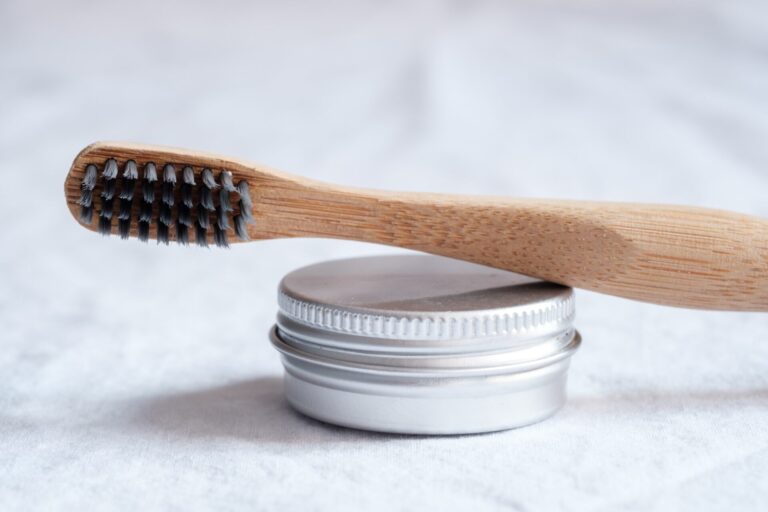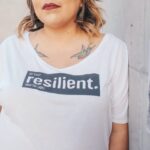As summers grow increasingly hotter due to global warming, parasols have become essential accessories. In Japan, nearly everyone carries one to shield themselves from intense sunlight and prevent their skin from tanning.
Unfortunately, the prevalence of low-quality products means that countless parasols end up in landfills after just a few seasons, contributing to significant environmental damage. People discard their parasols for various reasons: broken ribs, torn fabric, or diminished UV protection. Yet with a truly high-quality parasol, you could enjoy years—even decades—of reliable use.
The fashion industry ranks as the world’s second most environmentally polluting sector, and the umbrella industry follows this troubling pattern. To address the current cycle of cheaply mass-produced umbrellas being discarded annually, we as consumers must shift our perspective.
Choosing sustainable parasols represents more than just an environmental decision—it’s an investment in preserving traditional craftsmanship, supporting local economies, and ultimately enhancing your own quality of life.
Why Do Many Parasols Have Short Lifespans?
Problems with Cheap Materials and Construction
Many parasols on the market use inexpensive materials to keep costs down. The frame often uses low-strength aluminum alloys or cheap steel, while the fabric typically employs thin polyester. While these materials have advantages of being lightweight and inexpensive, they have durability issues.
The particular problem lies in insufficient strength at connection points. In cheap umbrellas, the connection points between ribs and fabric, and between ribs themselves, are designed weakly, making them easily break due to strong winds or frequent opening and closing. Additionally, fabric stitching is simplified, causing deterioration from UV rays and rainwater to progress rapidly.
Many Umbrellas Have Unrepairable Designs
Most parasols currently circulating in the market are not designed with repair in mind. Structures that don’t allow parts replacement or components fixed with special adhesives make repair impossible once broken.
Many manufacturers also don’t provide repair services, leaving consumers with no choice but to discard broken umbrellas and purchase new ones. This culture of “replacement over repair” accelerates the disposability of umbrellas.
Decline in UV Protection
Generally, the lifespan of parasols varies depending on materials, frequency of use, and storage conditions, but standard polyester or cotton parasols typically last about 2-3 years when used for several months annually (spring to summer). After this period, the decline in UV protection becomes noticeable.
UV protection treatment deteriorates faster than in rain umbrellas, with effectiveness gradually diminishing. As many manufacturers also state that “the guideline for UV protection effectiveness is 2-3 years,” there are cases where replacement is necessary to prioritize UV protection.
Environmental Impact of Discarded Umbrellas
Plastic and Metal Waste Problems
In Japan alone, it’s estimated that over 100 million umbrellas are discarded annually. These umbrellas contain large amounts of materials that take long periods to decompose, including polyester fabric, plastic components, and metal frames.
Particularly serious is the microplastics problem. As discarded umbrella fabric breaks down into fine pieces in the natural environment, microplastics are released into soil and water systems, potentially causing serious impacts on ecosystems. Additionally, the recycling rate for metal components is low, resulting in waste of valuable resources.
Challenges from Non-combustible Composite Materials
Modern umbrellas are made by combining different materials, making proper separation and recycling difficult. Fabric, frames, handles, and metal fittings all require different processing methods but are integrated as one unit, making complete separation very difficult.
Due to this composite material problem, many discarded umbrellas end up in landfills, continuing to burden the environment for long periods. Even in combustion processing, there’s a risk of harmful substance generation, making proper treatment costly.
What Are Sustainable Parasols?
Long-lasting Materials and Construction
Frame Strength and Durability
The most important element of sustainable parasols is frame strength. High-quality parasols use materials with excellent durability such as carbon fiber, glass fiber, or thick steel. Particularly important is selecting materials that combine flexibility against wind with restoration capability.
In frame design, considerations include stress distribution structures and reinforcement of easily damaged connection points—innovations designed for long-term use. Additionally, umbrellas with more ribs distribute load better, reducing burden on individual ribs and improving durability.
Fabric UV Protection Performance
When selecting parasol fabric, the durability of UV protection is crucial. Inexpensive umbrellas typically rely on surface coatings for UV protection, which wear away with regular use. In contrast, high-quality parasols integrate UV protection directly into the fabric weave or use specialized fibers that maintain their effectiveness for years.
Opting for parasol-specific designs rather than combination rain-and-sun umbrellas can significantly extend UV protection performance. UV coatings easily wash away when exposed to water, making dedicated parasols the better choice for consistent sun protection.
Color selection also matters: darker shades like black or navy blue retain their UV-blocking properties longer than lighter colors. Parasols with dark undersides provide additional protection by reducing reflected UV rays from reaching your skin.
Repairable Design
Can Parts Be Replaced?
Truly sustainable parasols are designed to allow parts replacement. They feature structures where individual ribs can be replaced if damaged, or designs that allow fabric re-covering—built with repair in mind.
Particularly important is the use of standardized parts. Using special or proprietary parts makes part procurement difficult during repairs. Ideally, designs should use parts with maximum versatility and consider future repairs and maintenance.
Repair Services from Craftspeople or Manufacturers
Many sustainable umbrella brands provide comprehensive repair services. Having extensive after-sales service is also evidence that the umbrella is designed for long-term use.
The content of repair services is also important. It’s crucial to choose brands that provide comprehensive services including not just simple damage repair, but regular maintenance, parts upgrades, and fabric replacement.
Environmentally Considerate Material Selection
Recycled Materials – Organic Cotton and Recycled Polyester
To reduce environmental burden, many sustainable umbrella brands actively use recycled materials. Organic cotton is grown without pesticides or chemical fertilizers, significantly reducing risks of soil and water pollution.
Recycled polyester is made from waste plastics like PET bottles, reducing consumption of new petroleum resources. From the perspective of effective waste utilization, it also contributes to realizing a circular society.
Environmentally Low-impact Dyes and Processing
Environmental consideration in fabric dyeing and processing is also an important element. Traditional chemical dyes and processing agents may contain substances harmful to the environment and human body. Sustainable umbrellas are advancing the use of natural dyes and adoption of processing methods that don’t contain harmful substances.
Particularly noteworthy is the use of materials that comply with international safety standards like OEKO-TEX standards. These standards set strict criteria for over 350 types of harmful substances, achieving both safety and environmental consideration.
5 Sustainable Parasol Brands in Japan
Komiya Shoten
Hightlights:
- Repair services available
- Handmade
- Organic cotton materials
Komiya Shoten is a long-established umbrella manufacturer continuing since the Edo period, inheriting traditional craftsmanship into modern times. The company maintains the policy: “To help customers use umbrellas purchased from Komiya Shoten for as long as possible, we provide repairs and maintenance when malfunctions occur, as long as parts are available.”
All umbrellas are handmade, characterized by careful finishing by skilled craftspeople. Particularly, parasols using organic cotton combine the gentle texture of natural materials with excellent UV protection performance. This brand truly practices sustainable umbrella-making that balances traditional techniques with environmental consideration.
SHOP
AMVEL UMBRELLA STORE
Highlights:
- Repair services available
- Responsible manufacturing
- PFOA-free water repellent
AMVEL UMBRELLA STORE operates under the motto: “To help customers cherish and use their precious umbrellas for a long time, we promise the most generous guarantees and services at the highest industry standards.”
The company’s environmental initiatives are very comprehensive, outsourcing umbrella fabric manufacturing to major fabric manufacturers in Taiwan and producing in factories complying with OEKO-TEX® Standard 100. These factories apply world-class safety standards targeting over 350 harmful substances and don’t use azo dyes that may produce specific aromatic amines.
For water repellent treatment, they began switching to PFOA-free water repellents from autumn 2020, improving safety for humans and the environment. For umbrella frames, they minimize toxic plating treatments and adopt alternative black electrodeposition coating, with environmental consideration thoroughly implemented in details.
SHOP
Fox Umbrellas
Highlights:
- Handmade
- Repair services available
Fox Umbrellas, a long-established British brand, has been making the highest quality umbrellas since its founding in 1868. Umbrellas carefully handmade one by one by skilled British craftspeople boast graceful slim-rolled forms and excellent strength, beloved worldwide as practical and beautiful umbrellas.
In Japan, Vulcanize Works partners with established workshops specializing in Fox Umbrella repairs, providing full repair and maintenance services for long umbrellas, parasols, and telescopic (folding) umbrellas. Inheriting traditional British umbrella techniques into modern times, these umbrellas are highly regarded as lifelong companions.
SHOP
AURORA
Highlights:
- After-sales repair services
- PET bottle recycled materials
- Recycled materials
AURORA states: “We responsibly undertake maintenance so that customers can use their precious umbrellas with attachment for a long time,” providing comprehensive after-sales service including free first-time repairs after purchase.
Environmental initiatives are also active, using fabric woven from high-quality “&+®” thread made from polyester processed thread and recycled PET bottles for parasols (rain-and-shine umbrellas), considering the global environment. “&+®” uses clean PET bottles collected and properly sorted from Japanese municipalities and stores as raw materials, achieving the same high whiteness as conventional threads.
Furthermore, they participate in the “Renew Project” addressing waste problems in the textile industry, actively engaging in collecting and recycling discarded clothing and fabrics to transform them into recycled thread.
They also participate in the ORGABITS project, promoting initiatives where everyone contributes “a little bit” to the global environment and society by delivering products with 10% organic cotton to many people.
SHOP
Ashiya Rosa Blanc
Highlights:
- Repair services available
- High UV protection materials
Ashiya Rosa Blanc is a high-quality Japanese parasol brand that balances functionality with design. The company provides repair services (excluding online shop purchases) and supports products long-term after purchase.
They excel particularly in parasol functionality, developing high-performance products adapted to Japan’s harsh UV environment, including fabrics achieving over 99% UV protection rates and special coatings with high heat-blocking effects. With high quality and beautiful design, these parasols are supported by many users as long-lasting companions.
SHOP
Tips for Making Parasols Last Longer
Handle with care
Opening/Closing Methods and Storage
To make parasols last longer, learning proper opening and closing methods is important. When opening, don’t force the ribs open but use the central button or slider to open naturally. Sudden opening and closing burdens the frame, so gentle and careful operation is essential.
When storing, ensure the umbrella is completely dry before folding. Storing while damp causes mold and odors, accelerating fabric deterioration. For folding umbrellas, occasionally changing the folding pattern rather than always folding at the same creases helps avoid concentrated stress on specific areas.
Maintenance Methods
Fabric Care and Frame Inspection
For fabric maintenance, regular dirt removal is important. Gently wipe with water diluted with neutral detergent, then remove detergent residue with clean water. For fabrics with UV protection treatment, avoid strong detergents or bleach, caring as gently as possible.
For frame inspection, regularly check for loose connections or cracks. Also check metal parts for rust and plastic parts for deterioration or discoloration. When problems are discovered, early repair prevents major damage.
Storage location is also important—store in well-ventilated areas away from direct sunlight, avoiding humidity and extreme temperature changes to minimize material deterioration.
Using UV Protection Spray
UV effectiveness gradually deteriorates. Commercial UV protection spray can be applied to surfaces to reinforce coating and extend UV protection. Re-spraying about every two years is particularly recommended.
Conclusion
Choosing sustainable parasols extends far beyond environmental activism—it’s about enriching your daily life. High-quality parasols offer superior functionality and become trusted companions for comfortable summer living year after year.
These sustainable choices create value on multiple levels: preserving traditional craftsmanship, revitalizing local economies, and reducing environmental impact. When you next shop for a parasol, consider investing in “one that will last” and embrace a lifestyle that harmonizes summer comfort with environmental responsibility.























